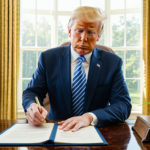Minnesota is on the cusp of legalizing recreational marijuana, a move that is likely to have a significant impact on the state’s medical marijuana program. As of now, over 48,000 Minnesotans purchase cannabis through the state’s medical marijuana program, which was established in 2015. Two licensed retailers operate 15 dispensaries across the state, offering a range of products to patients.
Chelsea Swanson, a patient from St. Francis, credits medical marijuana with helping her manage her nausea, pain, and ability to function. She currently drives 30 miles to shop at a dispensary in New Hope, but once recreational dispensaries open, she may not need to travel as far or enroll in a regulatory program.
However, the medical cannabis industry may take a hit once recreational marijuana becomes legal. In Michigan, for example, medicinal sales dropped significantly after recreational sales began. In Minnesota, state officials are working to ensure that the protocols regulating medical marijuana remain in place, including safety standards for the cannabis plant and how it’s grown.
One key difference between medical and recreational marijuana is taxation. Medical marijuana will remain tax-free, while recreational marijuana will be subject to taxes. Additionally, recreational marijuana will have limits on possession and potency, while medical marijuana will not.
The medical program is also set to undergo changes in 2025, including the elimination of the $200 annual enrollment fee for patients and the requirement for patients to recertify every three years by a physician instead of annually. The program will also allow patients from other states to purchase products in Minnesota under a “visiting patient option” starting in two years, and the age threshold for registered caregivers to purchase cannabis flower will be lowered from 21 to 18.
Overall, the legalization of recreational marijuana in Minnesota is likely to have a significant impact on the state’s medical marijuana program, but state officials are working to ensure that the program remains accessible and effective for patients.












